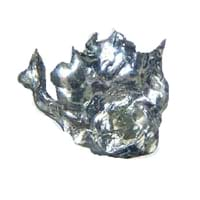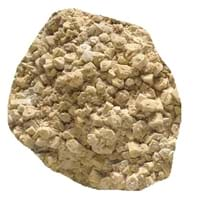Cadmium vs Strontium
Periodic Table
Symbol
Cd
Sr
Group Number
12
6
2
16
Period Number
5
5
Block
d block
s block
Element Family
Transition Metal
Alkaline Earth
CAS Number
7440439
99+
7440246
99+
Space Group Name
P63/mmc
Fm_ 3m
Space Group Number
194.00
5
225.00
2
Facts
Interesting Facts
- Naturally occurring minor elements include Cadmium.
- Cadmium is released into atmosphere to control volcanic eruption and forest fires.
- It is used for electroplating of Steel for corrosion resistance.
- It can absorb neutrons and used in nuclear reactor to control atomic fission.
- Strontium element is softer than Calcium.
- Silvery Strontium turns yellow, if exposed to air.
Sources
Found As a By-product, Found in Minerals, Mining
Found in Minerals, Mining, Ores of Minerals
History
Who Discovered
Karl Samuel Leberecht Hermann and Friedrich Stromeyer
William Cruickshank
Discovery
In 1817
In 1787
Abundance
Abundance In Universe
2 * 10-7 %
22
4 * 10-6 %
14
Abundance In Sun
~0.0000006 %
21
~0.000005 %
15
Abundance In Meteorites
0.00 %
31
0.00 %
15
Abundance In Earth's Crust
0.00 %
99+
0.04 %
10
Abundance In Oceans
0.00 %
28
0.00 %
4
Abundance In Humans
0.00 %
11
0.00 %
7
Uses
Uses & Benefits
- It has very limited uses as it is a toxic metal and it can cause birth defects, cancer, etc.
- Almost 80% of Cadmium metal is used in Nickel cadmium Batteries and now it is getting replaced with nickel hydride.
- Strontium metal is used to producing ferrite magnets as well as refining zinc.
- By-product of nuclear reactors called Strontium-90 is a radioactive isotope; it is absorbed by tissues and destroys bone marrow and cancer growth.
Industrial Uses
Aerospace Industry, Ammunition Industry, Chemical Industry, Electrical Industry, Electronic Industry
Ammunition Industry, Chemical Industry
Medical Uses
NA
NA
Other Uses
Alloys
Alloys
Biological Properties
Toxicity
Toxic
Non Toxic
Present in Human Body
Yes
Yes
In Blood
0.01 Blood/mg dm-3
24
0.03 Blood/mg dm-3
19
In Bone
1.80 p.p.m.
15
140.00 p.p.m.
7
Physical Properties
Melting Point
320.90 °C
99+
769.00 °C
99+
Boiling Point
765.00 °C
99+
1,384.00 °C
99+
Appearance
Physical State
Solid
Solid
Color
Silvery Bluish-Gray
Silvery White
Luster
Metallic
Metallic
Hardness
Mohs Hardness
2.00
16
1.50
18
Brinell Hardness
203.00 MPa
39
Not Available
Speed of Sound
2,310.00 m/s
39
Not Available
Optical Properties
Reflectivity
67.00 %
11
Not Available
Allotropes
No
No
α Allotropes
Not Available
Not Available
β Allotropes
Not Available
Not Available
γ Allotropes
Not Available
Not Available
Chemical Properties
Chemical Formula
Cd
Sr
Isotopes
Known Isotopes
34
5
27
12
Electronegativity
Pauling Electronegativity
1.69
17
0.95
99+
Sanderson Electronegativity
1.98
9
0.72
27
Allred Rochow Electronegativity
1.46
15
0.99
37
Mulliken-Jaffe Electronegativity
1.53
13
1.00
18
Allen Electronegativity
1.52
27
0.96
40
Electropositivity
Pauling Electropositivity
2.31
37
3.05
7
Ionization Energies
1st Energy Level
867.80 kJ/mol
11
549.50 kJ/mol
99+
2nd Energy Level
1,631.40 kJ/mol
32
1,064.20 kJ/mol
99+
3rd Energy Level
3,616.00 kJ/mol
13
4,138.00 kJ/mol
10
4th Energy Level
Not Available
5,500.00 kJ/mol
13
5th Energy Level
Not Available
6,910.00 kJ/mol
18
6th Energy Level
Not Available
8,760.00 kJ/mol
18
7th Energy level
Not Available
10,230.00 kJ/mol
19
8th Energy Level
Not Available
11,800.00 kJ/mol
19
9th Energy Level
Not Available
15,600.00 kJ/mol
17
10th Energy Level
Not Available
17,100.00 kJ/mol
19
11th Energy Level
Not Available
31,270.00 kJ/mol
6
Electrochemical Equivalent
2.10 g/amp-hr
27
1.64 g/amp-hr
99+
Electron Work Function
4.22 eV
22
2.59 eV
99+
Other Chemical Properties
Chemical Stability, Anti Corrosion, Ionization, Radioactive Isotopes, Solubility
Ionization, Radioactive Isotopes, Radioactivity, Solubility
Atomic Properties
Atomic Number
48
99+
38
99+
Electron Configuration
[Kr] 4d10 5s2
[Kr] 5s2
Crystal Structure
Hexagonal Close Packed (HCP)
Face Centered Cubic (FCC)
Crystal Lattice
HCP-Crystal-Structure-of-Cadmium.jpg#100
FCC-Crystal-Structure-of-Strontium.jpg#100
Atom
Number of Protons
48
99+
38
99+
Number of Neutrons
64
99+
50
99+
Number of Electrons
48
99+
38
99+
Radius of an Atom
Atomic Radius
151.00 pm
32
215.00 pm
5
Covalent Radius
144.00 pm
40
195.00 pm
15
Van der Waals Radius
158.00 pm
99+
249.00 pm
7
Atomic Weight
112.41 amu
99+
87.62 amu
99+
Atomic Volume
13.10 cm3/mol
39
33.70 cm3/mol
6
Adjacent Atomic Numbers
Valence Electron Potential
30.00 (-eV)
99+
25.70 (-eV)
99+
Lattice Constant
297.94 pm
99+
608.49 pm
6
Lattice Angles
π/2, π/2, 2 π/3
π/2, π/2, π/2
Lattice C/A Ratio
1.89
1
Not Available
Mechanical Properties
Density
Density At Room Temperature
8.65 g/cm3
99+
2.64 g/cm3
99+
Density When Liquid (at m.p.)
8.00 g/cm3
28
2.38 g/cm3
99+
Tensile Strength
62.00 MPa
16
Not Available
Viscosity
Not Available
Not Available
Vapor Pressure
Vapor Pressure at 1000 K
Not Available
121.00 (Pa)
1
Elasticity properties
Shear Modulus
19.00 GPa
35
6.03 GPa
99+
Bulk Modulus
42.00 GPa
29
Not Available
Young's Modulus
50.00 GPa
36
15.70 GPa
99+
Poisson Ratio
0.30
14
0.28
17
Other Mechanical Properties
Ductile, Malleable
NA
Magnetic Properties
Magnetic Characteristics
Specific Gravity
8.65
36
2.64
99+
Magnetic Ordering
Diamagnetic
Paramagnetic
Electrical Properties
Electrical Property
Semiconductor
NA
Resistivity
72.70 nΩ·m
36
132.00 nΩ·m
24
Electrical Conductivity
0.14 106/cm Ω
15
0.08 106/cm Ω
26
Electron Affinity
0.00 kJ/mol
40
5.03 kJ/mol
38
Thermal Properties
Specific Heat
0.23 J/(kg K)
26
0.30 J/(kg K)
18
Molar Heat Capacity
26.02 J/mol·K
32
26.40 J/mol·K
28
Thermal Conductivity
96.60 W/m·K
16
35.40 W/m·K
37
Critical Temperature
Not Available
Not Available
Thermal Expansion
30.80 µm/(m·K)
10
22.50 µm/(m·K)
18
Enthalpy
Enthalpy of Vaporization
100.00 kJ/mol
99+
150.00 kJ/mol
99+
Enthalpy of Fusion
6.19 kJ/mol
99+
9.16 kJ/mol
38
Enthalpy of Atomization
113.00 kJ/mol
99+
163.20 kJ/mol
99+
Standard Molar Entropy
51.80 J/mol.K
27
55.00 J/mol.K
26
|
||
|
||
|












